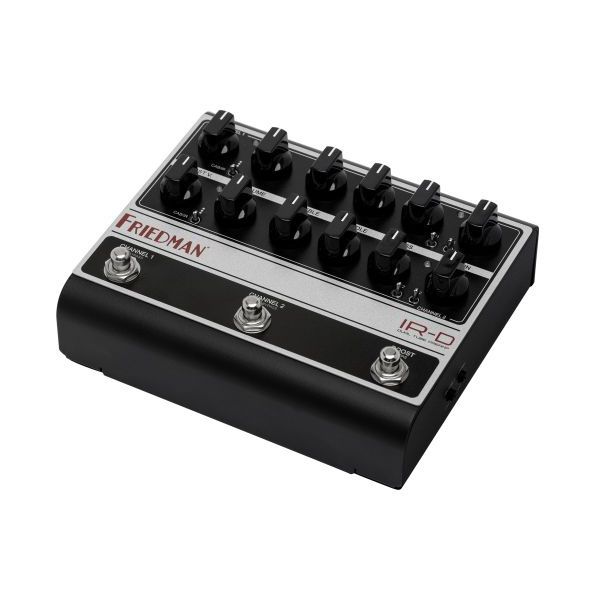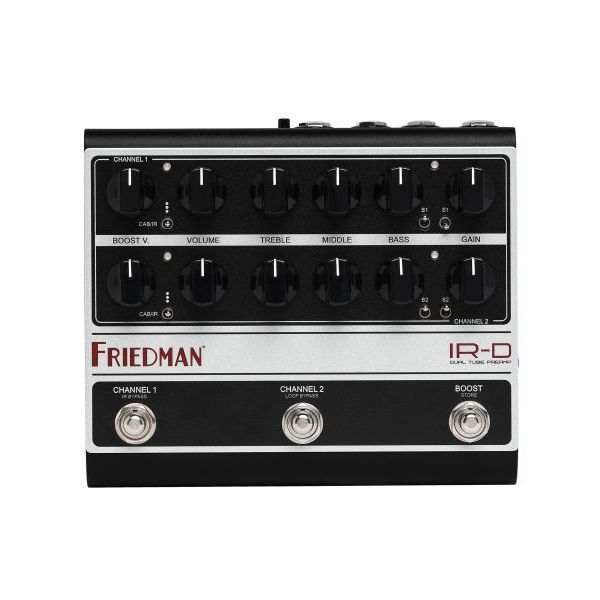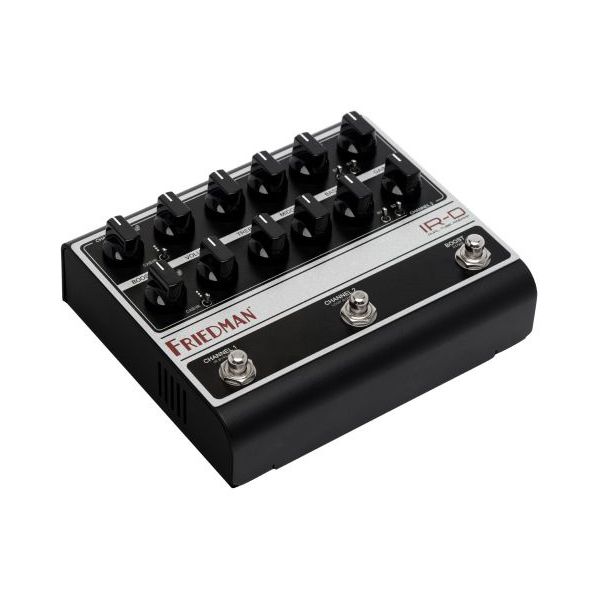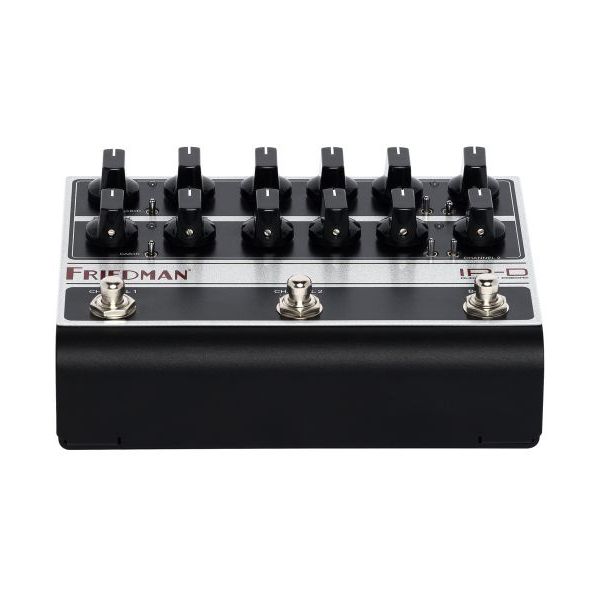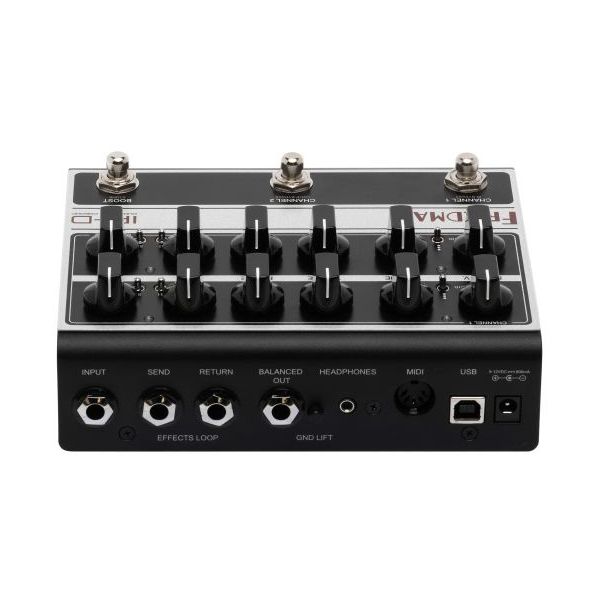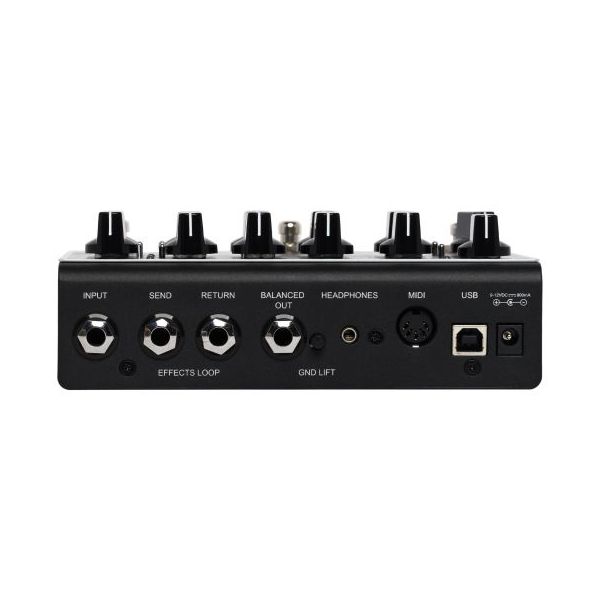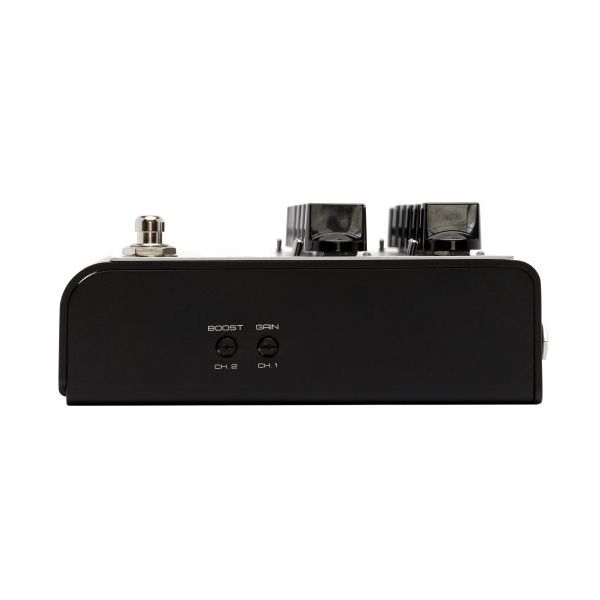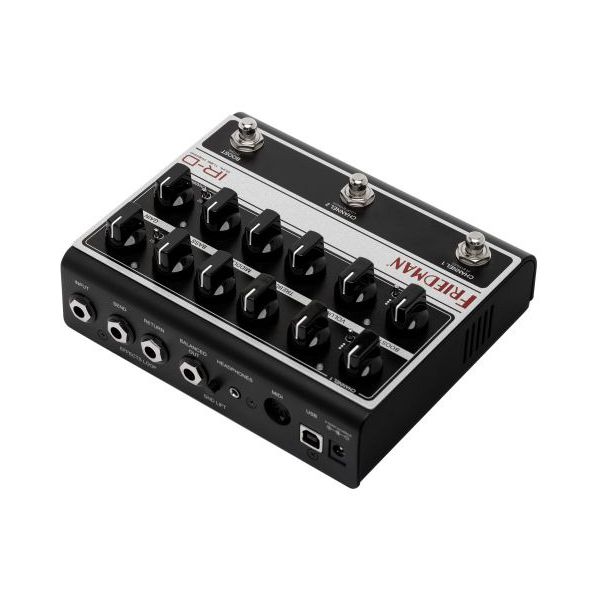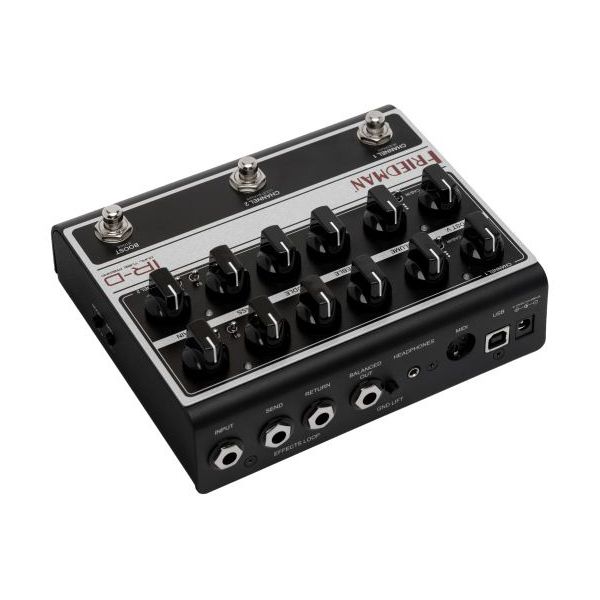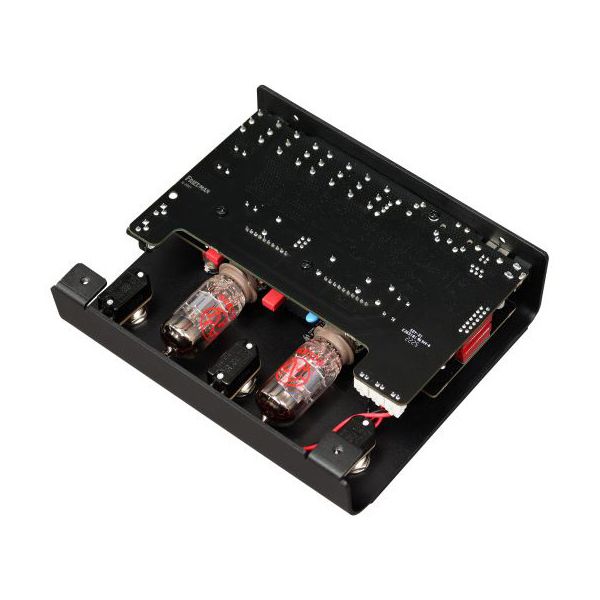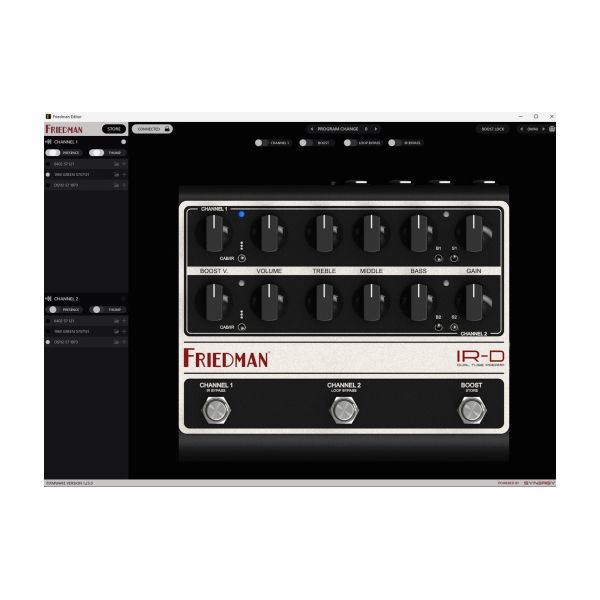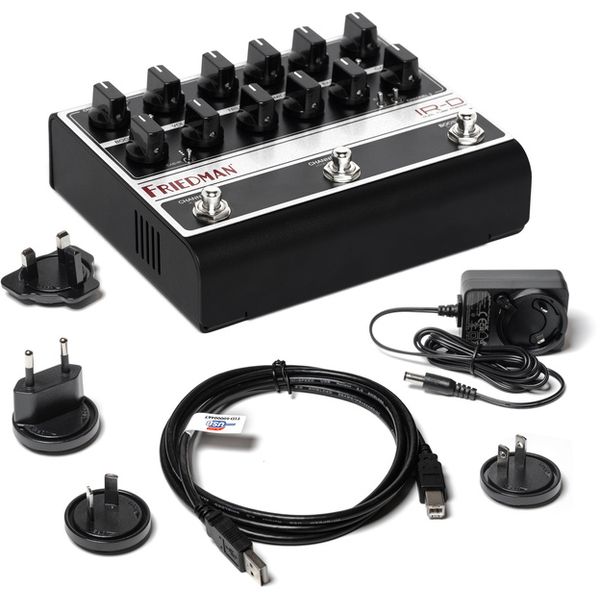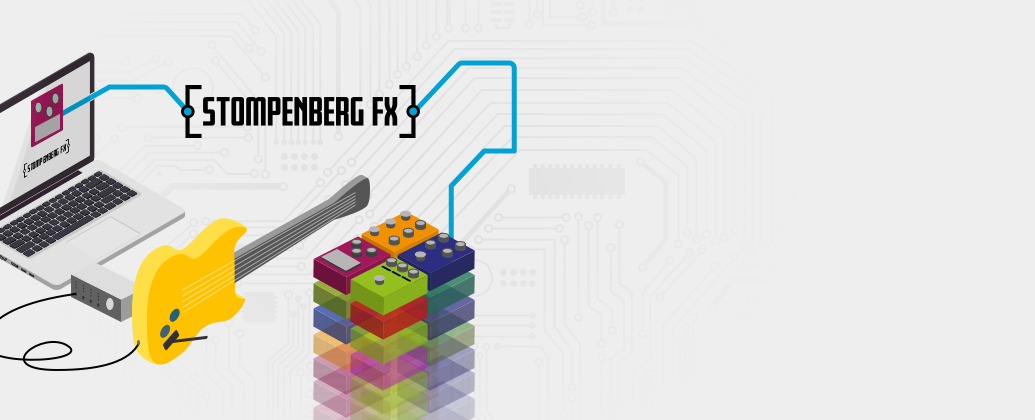The IR-D is basically Friedman's twin sister in a small pedal, at least its pre-amp. The twin-sister itself consists of two dirty shirly channels.
The two channels are identical in terms of settings and how they sound. So you can set up one channel as a clean/crunch and the other channel as a rhythm/lead channel, for example and then switch between the two.
I was really surprised how versatile each channel is. The S-switch (gain structure) of each channel has three positions, basically giving you three different amps sound-wise. It goes from low gain, which sounds like a JTM45, over normal Plexi up to boosted Plexi on the highest gain setting. The bright switch fattens up a strat sound in down position and boosts the uppper mids in up position for modern humbucker sounds. All the knobs (EQ, gain, volume) have a decent and usable amount of range. The EQ actually changes EQ, not like on most Marshalls ^^
The software works well, however you can't control the knob positions from the software or the other way around. The software offers to change presence and depth/resonance with a three way toggle each. Which I would've liked to see as switches on the pedal, but I guess there was no more room available.
You can load your own IRs into the pedal via the software, which works well. The IR loader can also be bypassed, which is what I am doing. I run the raw DI signal from the IR-D into my Quad Cortex and then have speaker simulation there.
Overall, for me, this thing resembles the perfect compromise between the old tube world and the new IR/sim world. It integrates well into any common pedal board. Very flexible, great plexi-ish sounds, lots of flexibility.
I am removing one star from handling, because:
- It still uses the old and deprecated USB-B printer connection - a cable is included tho
- presence and depth can only be changed in the software



